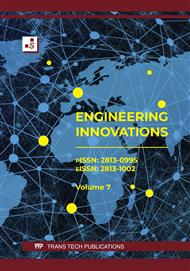p.7
p.19
p.29
p.39
p.51
p.61
p.75
p.89
p.95
Enhancing Cable Gland Design Efficiency through TRIZ-Driven Innovation
Abstract:
This study introduces a novel approach to cable gland design through the utilization of TRIZ tools. A cable gland serves two primary functions: retaining and sealing cables within an enclosure, while also offering secondary features such as earthing and cable protection. The number of components in a gland type is determined by functional requirements. Given its classification as a low-cost, high-volume product, the competitive edge lies in achieving reduced selling costs and simplified installation. Addressing key challenges, which include a high component count (currently nine) and a cumbersome installation process, forms the core focus of this work. The research outlines the TRIZ-guided process and methodology employed to devise inventive solutions to these issues, resulting in a component reduction from nine to four. Moreover, the study encompasses the incorporation of various constraints in the development of efficient cable gland designs, yielding several innovative concepts. The paper also introduces proposed system designs and architectures, established based on TRIZ-derived inventive principles, paving the way for subsequent system prototype development. The work underscores the accelerated problem identification and solution generation facilitated by TRIZ tools. The evolving concept is presently situated within the feasibility and design phase, effectively addressing both primary and secondary challenges through TRIZ methodologies. Keywords: Inventive Problem solving, TRIZ, Engineering Problem, Cabled land, Trimming
Info:
Periodical:
Pages:
75-88
Citation:
Online since:
October 2023
Authors:
Keywords:
Permissions:
Share:
Citation:


